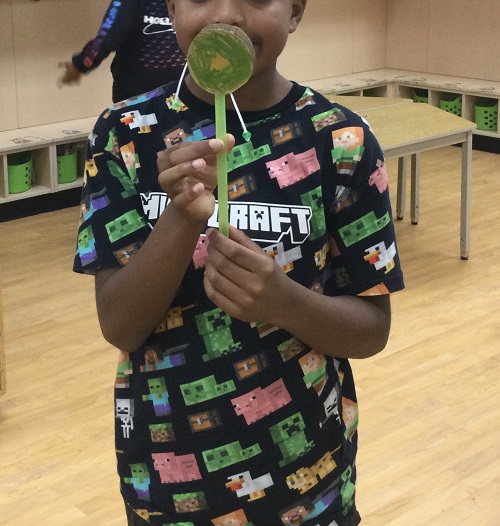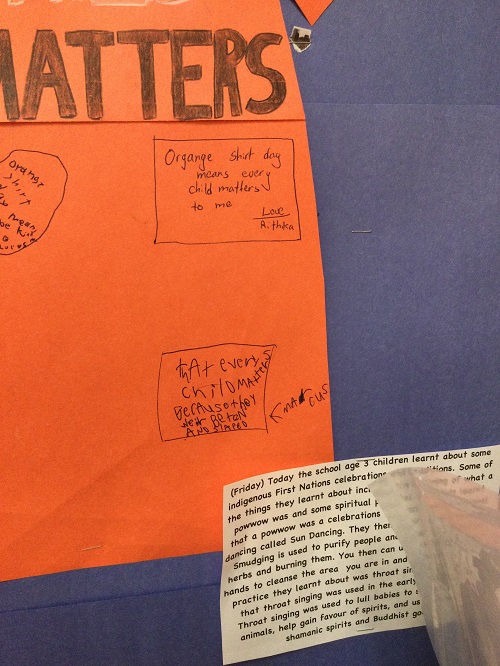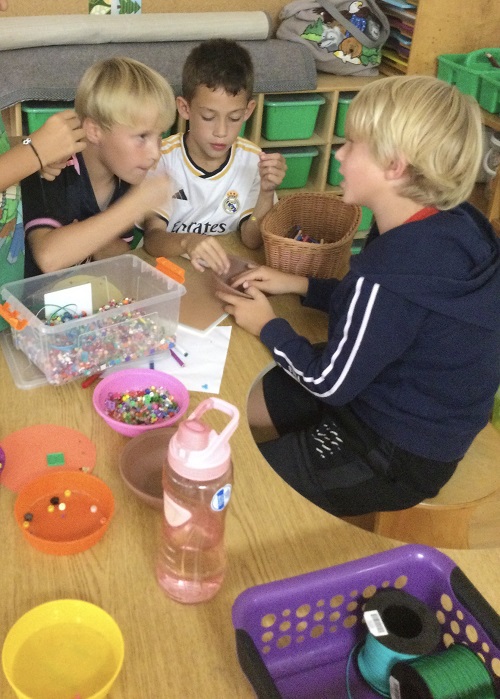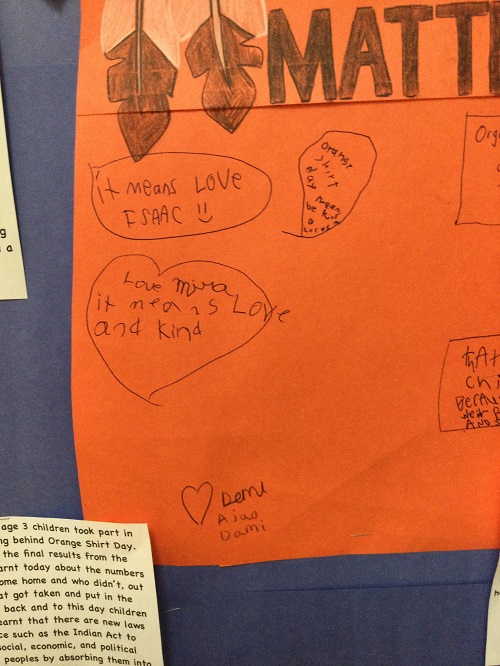Orange Shirt Day, observed on September 30, serves as a powerful reminder of the impact of residential schools on Indigenous communities in Canada. It aims to educate children about the importance of understanding and respecting diverse histories, cultures, and experiences. Educator Julia introduced a deeper understanding to the children in school age three by making a slideshow with different slides each day covering various topics and critical facts each day of the week. The topics covered in the slides sparked discussions and activities surrounding this day; educators can foster a pedagogical approach that emphasises experiential learning, empathy, and critical thinking. By engaging with the stories and lessons of Indigenous peoples, children learn how knowledge is constructed through personal and collective narratives, promoting a deeper understanding of social justice and reconciliation. This learning experience enriches their awareness and cultivates a sense of responsibility toward creating a more inclusive society.
On Monday, the children in School Age 3 at RisingOaks Early Learning | John Sweeney, engaged with the initial slides of Orange Shirt Day, which provided a thorough introduction to its significance. The presentation covered essential topics, including a general definition of the celebration, the locations of Indigenous communities worldwide, the distinctions between Indigenous peoples and Native Americans, and the profound impact of residential schools. Learning about the definition of Orange Shirt Day allowed the children to gain awareness and respect for Indigenous history, reflecting upon why we celebrate today. Discussions started to spark, allowing the children to connect emotionally and intellectually with the topics presented. By introducing the significance of Orange Shirt Day on the first day, the children began to grasp the importance of understanding diverse histories and the experiences of Indigenous peoples. Their comments—expressing feelings of injustice and empathy—demonstrate how personal engagement fosters a deeper connection to the subject matter.
On Tuesday, we reviewed slides detailing the closure of residential schools in Canada. We learned that the Department of Indian Affairs dismantled these institutions mainly due to the resistance from both children and their parents. Many children actively rebelled against the oppressive conditions, while parents took their concerns to higher levels of government, organizing protests that demanded change. This grassroots activism prompted the involvement of the Indian Department of Affairs and various churches by 1969. Ultimately, this series of actions contributed to the closure of the last residential school in 1996, marking a significant step toward acknowledging and addressing the injustices faced by Indigenous communities. By exploring the resilience of children and parents, the school-age kids discovered that meaningful change often stems from courage and collective action. This insight fosters a sense of agency in young learners, empowering them to understand their potential to influence society. Educator Julia reinforced this message, telling them, "If you truly have something to stand for that you believe needs to be changed, you are the one who needs to make it heard." Such encouragement inspires them to take the initiative, highlighting that even young voices can drive essential community transformations.
On Wednesday, we reviewed slides detailing the profound impacts of school shutdowns, emphasizing the hardships families and survivors face. The children learned that the repercussions were severe, even without formal education. Many children were removed from their homes, severing their ties to family history and culture. As a result, numerous students grew up without the warmth of a loving household, affecting their ability to nurture their own families in the future. In response to these challenges, the government introduced financial assistance programs. September 30 has since become a day to acknowledge these truths and promote healing for affected individuals, honouring their resilience and paving a path toward recovery. As they learned about these impacts, the children reflected on their roles in creating a more inclusive society within the school. They shared ideas like "we need to respect everyone and their things," "we need to take turns," and "we need to listen to one another," illustrating their commitment to fostering a supportive environment.
On Thursday, we learnt about celebrations and traditions of First Nations cultures, exploring indigenous festivities and cultural significance passed down through generations. Powwows emerged as lively gatherings where communities unite to honour their heritage through dance, music, and storytelling, fostering a deep sense of unity and pride. We learned about smudging, a sacred ritual that involves burning herbs like sage or sweetgrass to cleanse spaces and individuals, inviting positive energy and spiritual connection. The sun dance, a powerful ceremony, challenges participants physically as a form of devotion and renewal, often accompanied by communal prayers and songs. Throat singing, especially among the Inuit, offers a unique expression of storytelling, where two singers harmonize to echo the natural world's rhythms. These traditions beautifully reflect the resilience, spirituality, and communal bonds central to Indigenous identities. When educator Julia prompted the kids to share their celebrations at home, responses varied widely: "I celebrate Christmas," one said, while another mentioned Diwali. One child, inspired by the movie Coco, shared their admiration for the Day of the Dead. It was a decisive moment, revealing our classroom's rich tapestry of celebrations.
On Friday, we engaged in a reflection activity where each child could express their newfound understanding of Orange Shirt Day on a giant T-shirt. As they wrote their thoughts, phrases like "Orange Shirt Day means love," "It means healing," and "It means coming together" filled the fabric with meaningful insights. Once everyone had finished, we gathered to share and read each other's reflections. The children were genuinely amazed to see the depth of what they had learned, realizing their thoughts highlighted the importance of compassion and unity in honouring this significant day.
In conclusion, Orange Shirt Day is a crucial opportunity for education, reflection, and reconciliation, particularly for young learners. Through the engaging slideshows and discussions facilitated by educators, children gain insight into the historical injustices faced by Indigenous communities and the importance of cultural appreciation. By exploring the legacy of residential schools, the active resistance of Indigenous families, and the richness of Indigenous traditions, students not only deepen their understanding of diverse histories but also cultivate empathy and social responsibility.
The emotional responses expressed by the children highlight the impact of these discussions, fostering a generation that is more aware of social justice issues and committed to creating an inclusive society. As they learn about Indigenous peoples' hardships and vibrant cultures, they are empowered to carry these lessons into their futures. Ultimately, the observance of Orange Shirt Day is not merely a remembrance of the past but a call to action for the present and future, encouraging all individuals to stand in solidarity with Indigenous communities and work towards a more equitable world.




